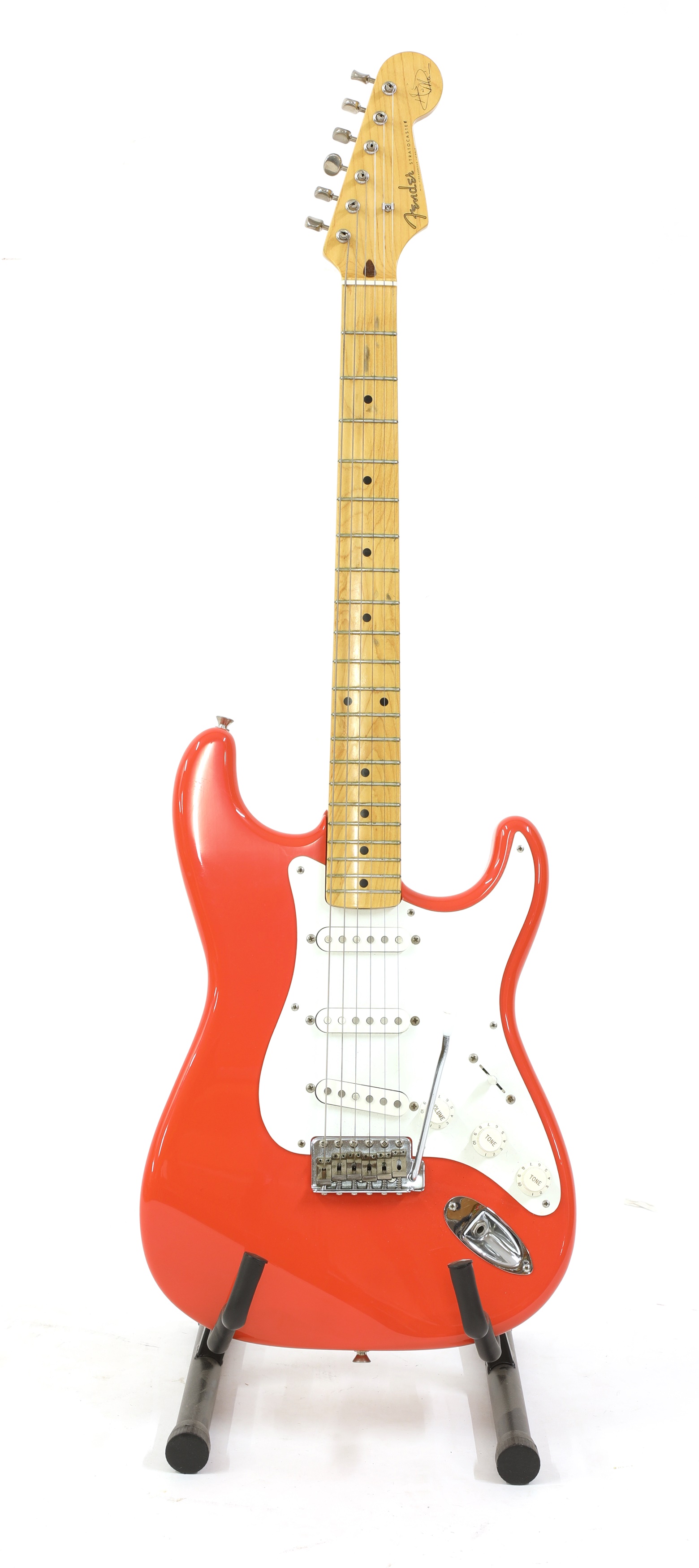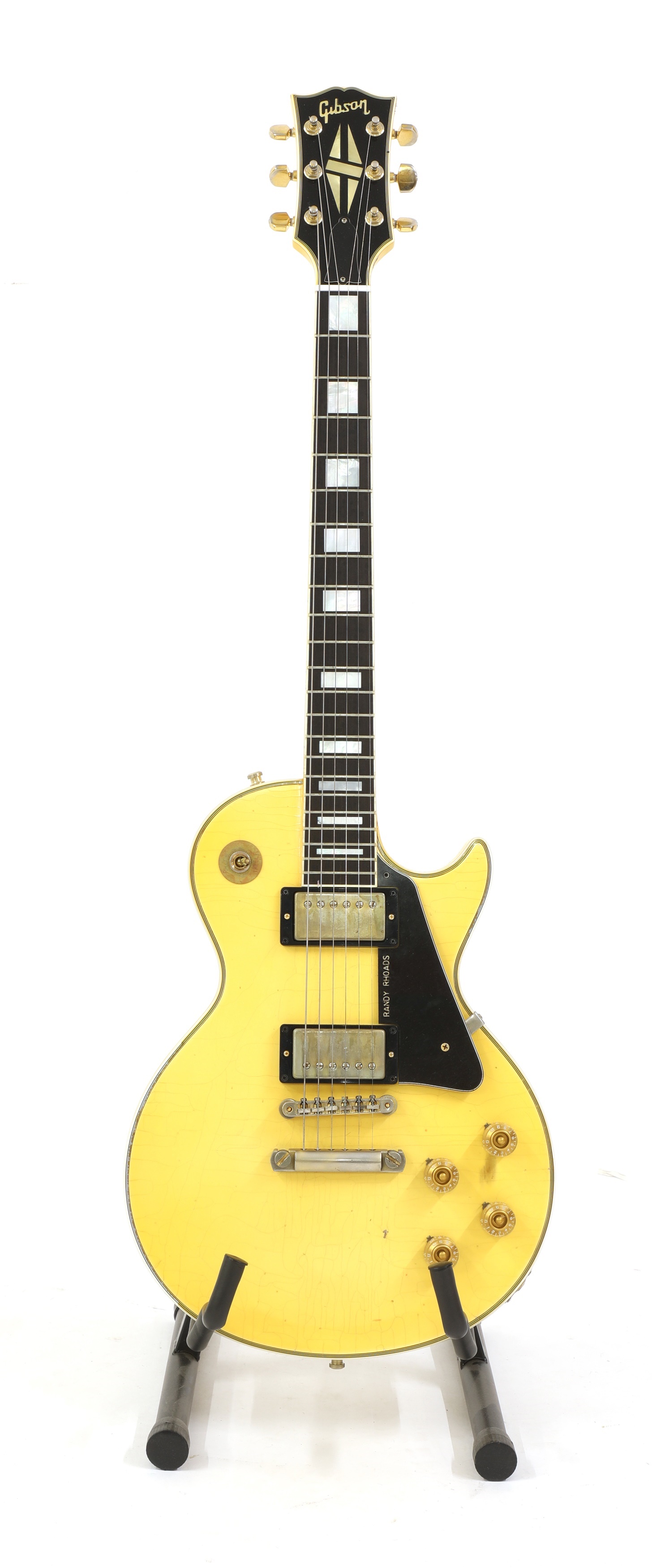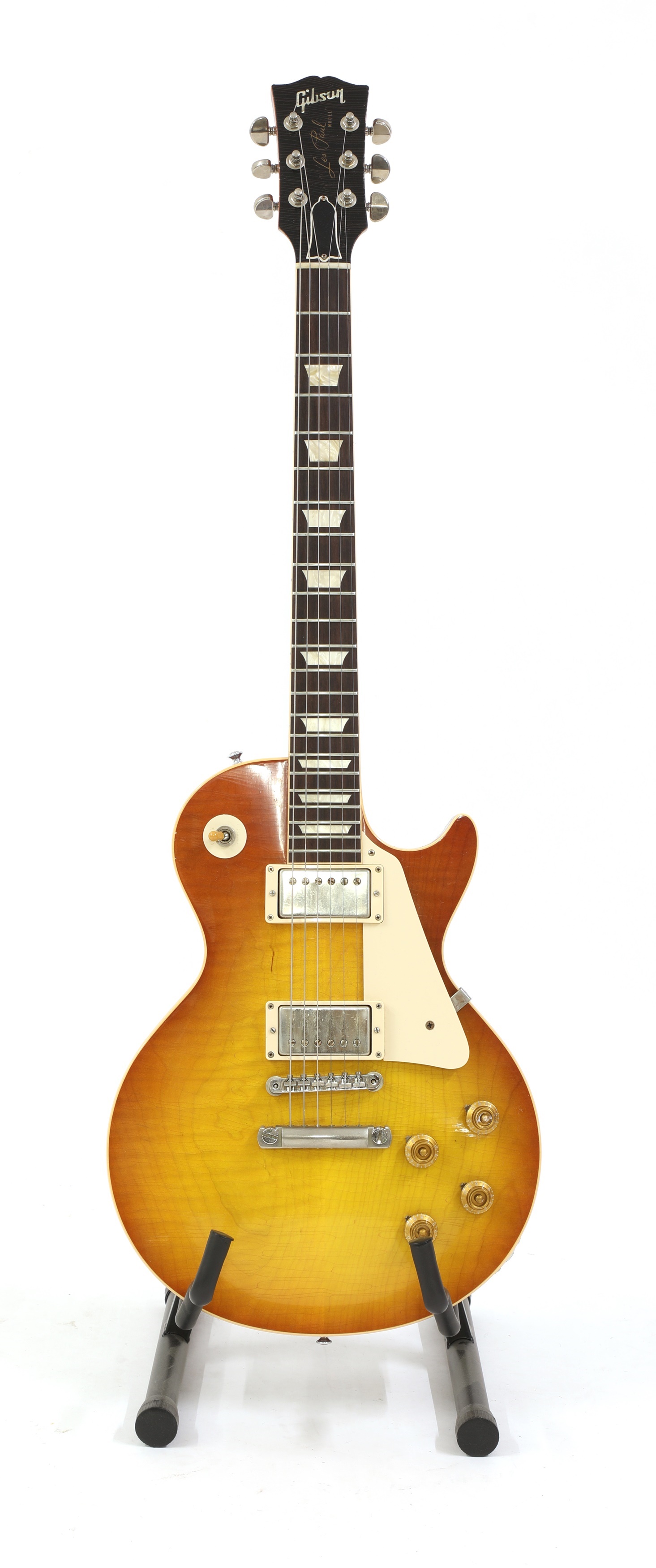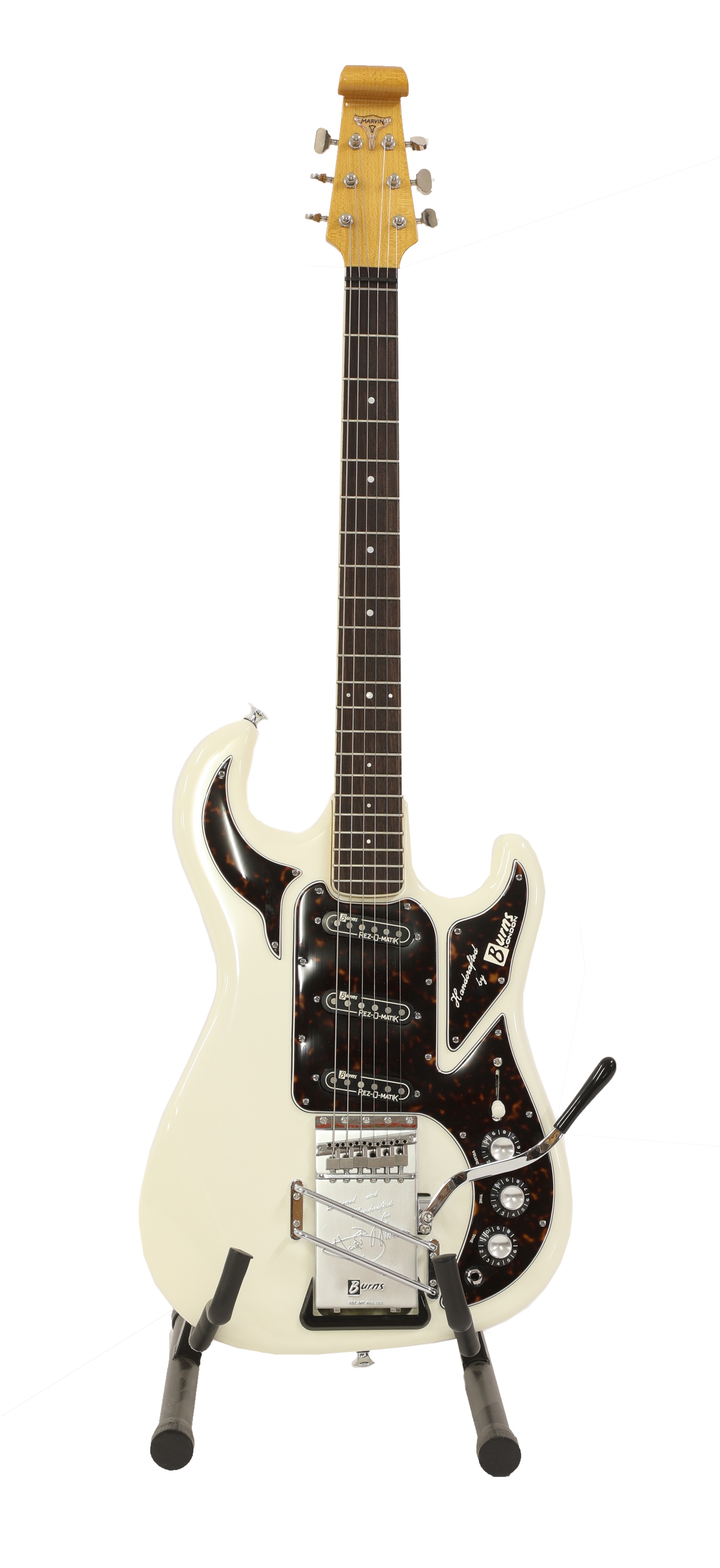

In the eighty-five years since its invention the electric guitar has forged and defined the path of popular culture and music, yet whilst spanning an infinite number of genres and wielders, the principal designs of the instrument have remained virtually unchanged since the early 1950s.
30 June 2022
In 1937 the Electro String Corporation invented what the world has come to recognise as the first electric guitar – the Rickenbacker frying pan – a lap steel guitar developed by George Delmetia Beauchamp. The following decade saw numerous takes on the technology with several imitations, as well as jazz guitarists experimenting with the technology within the hollow bodied guitars used at the time – usually resulting in feedback loops either from external noise or if played too loud.
Fast forward to Fullerton, California, in 1949, when Clarence Leonidas Fender, a then manufacturer of amplifiers, released the Esquire – the first solid body electric guitar on the market, and in quick succession after the Broadcaster and Telecaster. The feedback-free design of the solid body prevented the feedback hum of its predecessors, shrunk down the large bodies to a more compact size, and allowed for increased sustain in the instrument, factors which would see guitar driven music pushed to new frontiers.

Lot 174, Design 12 July 2022 | A 1996 Fender Stratocaster Hank Marvin Signature electric guitar. £400-600
Building the commercial success and recognition of the Telecaster, Leo Fender sought to develop the guitar further. In 1952 he began the development of a new model and, working against the criticisms from the Telecaster, along with active feedback from musicians, the company unveiled the Fender Stratocaster two years later.

Lot 171, Design 12 July 2022 | A 2010 Gibson Custom Shop Randy Rhodes '74 Les Paul Custom electric guitar. £7,000-9,000
Simultaneously in Nashville, the Gibson Guitar corporation was jointly experimenting with jazz icon Lester William Polsfuss, commonly known as Les Paul, on a solid bodied guitar. Les Paul had initially approached Gibson with design concepts over a decade earlier and continued to experiment with the idea of semi-hollow and solid body guitars throughout the 1940s. These, however, were dismissed until Fender proved the commercial viability of the solid body guitar almost a decade later. The finished design was unveiled in 1952, which saw the release of the Gibson Les Paul. Designed to be visually distinct from Fender’s leading designs, it featured a more rounded shape akin to the hollow-bodied guitars of the 1940s, in a more compact and thus heavier form.

Lot 172, Design 12 July 2022 | A 2010 Gibson Custom Shop Eric Clapton 'Beano' Les Paul electric guitar. £10,000-15,000
Both these designs saw instant recognition as exceptional design and their shapes were reproduced by manufacturers across the globe, partially due to production in their respective factories not being able to meet demand, and partially because they were expensive instruments. In the United Kingdom, for example, Burns Guitars were an early proponent of Stratocaster type guitars and saw early popularity among British acts, perhaps most notably 'The Shadows'. With popularity and international stardom, lead guitarist Hank Marvin’s Burns was soon swapped for a Fender Stratocaster.

Lot 173, Design 12 July 2022 | A 2004 Burns 'The Marvin' Hank Marvin Anniversary Edition electric guitar. £700-900
The same went for all global acts, regardless of genre; the Stratocaster and Les Paul respectively enjoyed exposure in the hands of most leading musicians at the time, and for generations to come. From the initial hands of Lester Polsfuss to Eric Clapton to Randy Rhoads, the Les Paul has seen applications from Jazz, Country and Blues to Classic Rock and Heavy Metal. Equally, the Stratocaster has seen itself applied to the clean sounds of Hank Marvin and the Shadows, to heavier contemporary uses, and everything in between.
Despite being across the musical spectrum from funk to punk, and having seen numerous iterations, modifications, and applications, these 70-year-old designs have remained unyielding. Appearing anywhere from local clubs and pubs to international stadiums, to adorning the walls of fans, the shapes of the early designs of both Fender and Gibson have taken on ubiquitous, yet iconic identities, which are sure to be as defining for the next 70 years.
The iconic models shown here will be offered for sale in our auction of Design on Tuesday 12 July. Viewing of the sale will be held at our Stansted Auction Rooms from Friday 8 to Monday 11 July.
For more information about the forthcoming sale, or to discuss consignment to a future Design auction, please contact -
design@sworder.co.uk | 01279 817778
A remarkable collection of 177 lots of rare and historic Bibles feature in our timed auction of Books, Manuscripts and Maps from 17-27 April, offering collectors, scholars and history enthusiasts a unique opportunity to own some of the most significant early English translations of the Holy Scriptures. The collection showcases centuries-old editions that played a pivotal role in shaping religious thought, language and culture.
15 April 2025
Ahead of his upcoming ‘retirement sale’ on 13–14 May, we caught up with the ever-charismatic Paul Atkinson to uncover some of the captivating stories behind the lots on offer.
11 April 2025
With styles and silhouettes endlessly evolving during the Victorian period, the continuous advancements in fashion offered women more choice and freedom regarding their attire. Sworders are delighted to present a collection of Victorian clothing in our upcoming Jewellery, Designer Handbags & Accessories sale, taking place on Wednesday 23 April.
9 April 2025